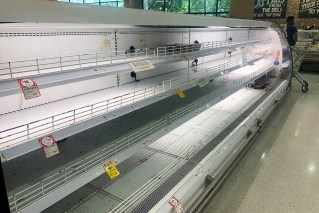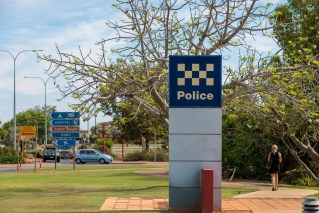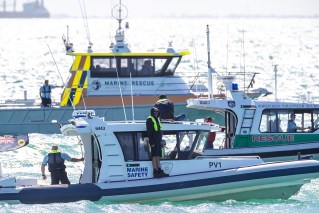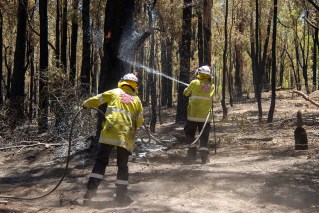BHP reveals iron ore train derailment damaged 1.5km of track as investigators search for clues

BHP has suspended its rail operations while inquiries are carried out into the train derailment. Photo: AAP
Rail safety investigators have arrived at the site of a deliberate train derailment in Western Australia’s Pilbara region, a day after a runaway train brought iron ore miner BHP’s rail network to a halt.
The fully-laden train, pulling 268 wagons of iron ore, was travelling from Newman to Port Hedland when the driver got out to inspect a wagon near Hester siding at 4.40am on Monday.
While the driver was out of the cabin, the train took off, travelling more than 90 kilometres in 50 minutes.
The train, made up of four locomotives, was eventually derailed at a set of points near Turner’s Siding, about 120 kilometres south of Port Hedland.
The derailment was orchestrated from BHP’s Integrated Remote Operations Centre in Perth.
Two rail safety officers from the Office of the National Rail Safety Regulator have arrived at the site of the derailment to begin an investigation.
The Australian Transport Safety Bureau (ATSB) is separately investigating the derailment.
A spokesperson for the ATSB said the investigation was likely to be completed in the second quarter of 2019.
Runaway train ‘very concerning’: Premier
WA Premier Mark McGowan said while he had not been briefed on the incident, it was clear “extraordinary measures” had been required.
“Obviously it would have been very concerning for everyone involved – BHP and the workforce, and the people of Port Hedland – that a train was travelling down the track without a driver and obviously out of control,” Mr McGowan said.
In a statement, BHP said about 1.5 kilometres of track was damaged, and the recovery process would take about one week.

The derailment was orchestrated from BHP’s remote operations centre in Perth. Photo: BHP
“We are working with the appropriate authorities to investigate the situation,” the company said.
In the meantime, train operations across BHP’s network have been suspended.
Data recorder may hold answers
Based on the distance travelled, the runaway train reached an average speed of about 110 kilometres per hour.
Rail Safety Consulting Australia owner Phillip Barker said it was unclear what had happened to make the train take off, but suggested it may have involved the configuration or isolation of the brake system.
“Usually, once the driver leaves the train, the brakes are on, there’s procedures for that,” Mr Barker said.
“They would have got permission to get off the locomotive and go and look at this wagon.
“There would have been a procedure in place to make sure the train didn’t move off.”
Mr Barker said rail safety officers would begin by asking the driver and rail controllers what happened.
“Any traction power that may have been applied, what the brake pressures along the train — on the front and the back — may have been.
“It’s an iterative approach and they’ll start working from the bottom, at the accident [site], right up to the top.
“They’ll be looking also at the safety systems .… to see if they’re in place, if they’re adequate and if they were followed.”
BHP will use its stockpile reserves to maintain supply at its port operations in Port Hedland.
– ABC







